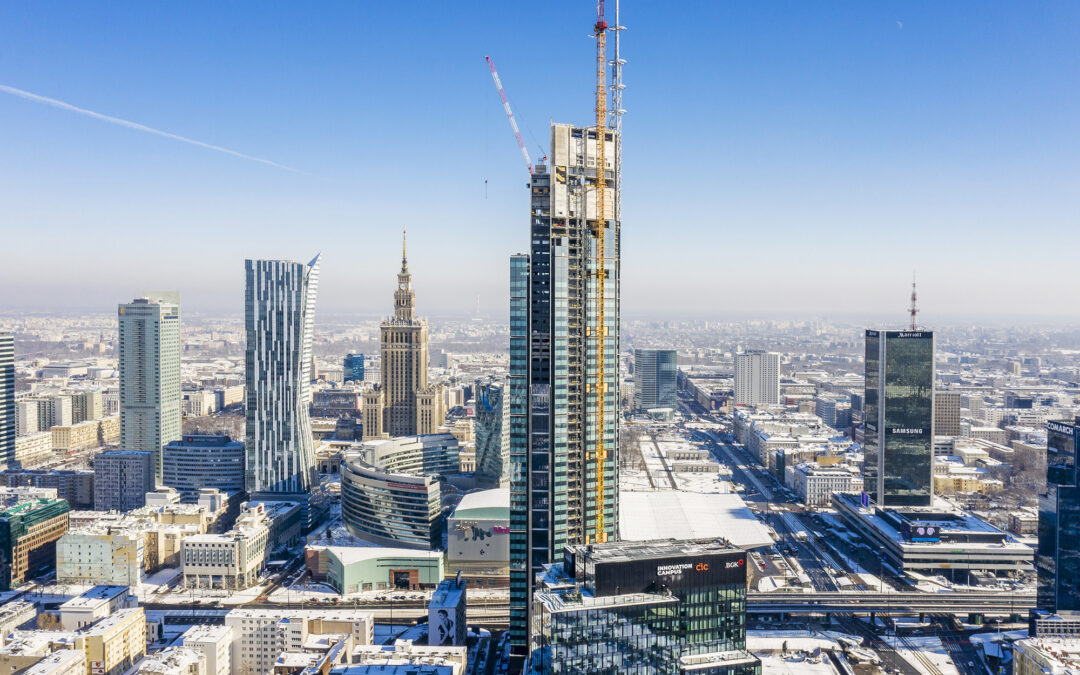Warsaw’s Varso Tower has become the tallest building in the European Union after reaching its full height of 310 metres (1,017 feet) over the weekend. The skyscraper eclipses Frankfurt’s Commerzbank Tower (259 metres), the previous record holder.
The tower, which is also fractionally higher than The Shard in London (309.6 metres), replaces the communist-era Palace of Culture and Science (237 metres) – a controversial post-war “gift” from Stalin – as Warsaw’s tallest building
W stolicy Polski stanął najwyższy budynek w Unii Europejskiej. Wieżowiec Varso Tower otrzymał ostatnie zwieńczenia na wierzchołku budowli i osiągnął 310 metrów wysokości.https://t.co/b9ivCbYxWM
— Bankier.pl (@bankier_pl) February 22, 2021
On Saturday evening, the 53-storey building was topped out with the completion of its spire, the final element of the building to be erected. Because of high winds, the openwork spire was mounted several metres deep into the building’s structure.
The tower is part of a larger development project – designed by Foster and Partners and developed by HB Reavis – near Warsaw Central station that will open either later this year or in 2022.
It will include viewing terraces on its 49th and 53rd floors, with the latter becoming the highest inhabited floor in Poland. By contrast, the observation deck of the Palace of Culture and Science is on the 30th floor. The tower will also contain a restaurant across three floors and 64,000 square metres of office space.
The spire alone is 80 metres tall, making it just under four times the height of Sigismund’s Column, which stands on Warsaw’s Castle Square, as well as 30 metres taller than Poland’s national stadium.
The development will create “a unique place in the heart of Warsaw dedicated to business, residents, and tourists – a place where people will work, go about their everyday business, and unwind in comfort,” Peter Pecnik, the country CEO of HB Reavis Poland, told Emerging Europe.
He added that the complex would transform the Wola district of Warsaw, which “many citizens have virtually forgotten”. Some local residents have, however, complained about disruption during building work, that the tower blocks out the sun, and that, once open, it will make the area more busy, reports Gazeta Wyborcza.
In January, as assembly on the spire began, the tower surpassed the height of the nearby Palace of Culture and Science, which had been the tallest building in Poland since it was constructed in 1955.
Though the palace has become an iconic part of Warsaw’s skyline, with its socialist realist style standing in stark contrast to the more modern skyscrapers later built around it, it has also proved controversial. In 2018, the then defence minister Antoni Macierewicz called for it to be demolished as a “symbol of Soviet rule”.
Main image credit: HBReavisPL (press materials)

Juliette Bretan is a freelance journalist covering Polish and Eastern European current affairs and culture. Her work has featured on the BBC World Service, and in CityMetric, The Independent, Ozy, New Eastern Europe and Culture.pl.




















